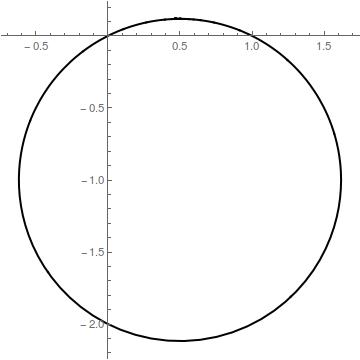Consider a family of lines #(4a+3)x -(a+1)y-(2a+1)=0# where #ainR#?
A) The locus of the foot of the perpendicular from the origin on each member of this family is?
B) A member of this family with positive gradient making an angle of #pi/4# with the line #3x-4y=2# is?
C) Minimum area of triangle which a member of this family with negative gradient can make with the positive semi axes is?
A) The locus of the foot of the perpendicular from the origin on each member of this family is?
B) A member of this family with positive gradient making an angle of
C) Minimum area of triangle which a member of this family with negative gradient can make with the positive semi axes is?
1 Answer
See below.
Explanation:
with
Now the perpendicular line to
so


